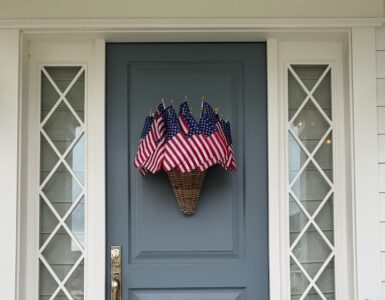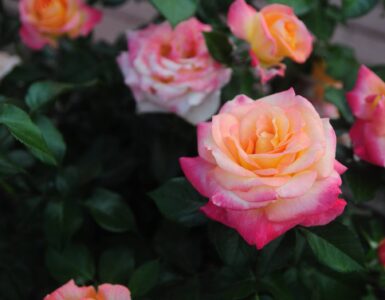Help your veggies survive the triple-digit temperatures!
Emily Saddler with the Jordan Valley Home & Garden Club has four ways to keep your garden cool and hydrated this summer.
Whew! It’s HOT out there! And if we’re feeling it, you know your garden is too! Keeping our veggies happy through the dog days of summer can be tricky. Rather than watering them constantly, there are measures you can take to reduce their water consumption need and increase the efficient use of the water you are supplying in ways that will keep your plants happy and productive- even in our scorching summer temperatures. The key is keeping the soil moist for as long of a period between watering as possible. Plants waste a lot of energy when they wilt then rejuvenate then wilt again. Check out our “Top 4 Tips” to help your garden beat the heat!
SHADE CLOTH
This is probably the number one way to keep your veggie crops happy and cool. Adding hoops to your raised beds is a simple enough process which we detailed in a previous post that you can see HERE. However, in the summer, instead of covering the hoops with plastic (which would quickly cook the plants) we’re adding shade cloth which shades the leaves of the plants while still allowing air and water penetration. We won’t cover the entire hoop structure with shade cloth- we’ll just cover the top and about halfway down the sides so that we still get great air flow. This is especially helpful for plants with large leaves, like pumpkins and vine crops, whose leaf surface absorbs more heat and sun. A little bit of shade leaves the plants with more energy to devote to production.
Once the hoops are complete, attach shade cloth to pipes with inexpensive clamps. Leave the bottom half open- the shade cloth should just cover the upper portion of the hoop.
If you have a traditional garden rather than raised beds, some folks will cover the entire garden with shade cloth.
MULCH
Use a 1-2″ layer of compost on top of your garden beds as mulch. Most of us know don’t think to apply this concept to our garden beds. Mixing compost into the soil in the spring creates a healthier soil but saving some to top dress the beds after you’ve planted them will help the soil retain water. The following spring you’ll just mix the old top dressing compost into the soil and apply a new layer on top after planting. Not only will this method lead to more even soil moisture, it will also make the beds more attractive and help keep out weeds.
DRIP IRRIGATION
Did you know that some plants, like tomatoes, do better when their leaves are kept dry and water is applied to the soil only? Plants take up the water through their root systems so it makes sense to apply water as closely as possible to that area. There are many forms of drip irrigation that can be used if you have a sprinkler system and a separate zone for your garden. My favorite type for raised beds is called “Netafim” and it has an emitter every 12 inches that releases water directly to the plants. You can also use the individual emitters for larger plants if desired. If you don’t have an automatic system, you can use a simple soaker hose that performs the same function as the drip irrigation but it’s hooked to your garden hose instead of an automated system. Parts for all of these systems can be purchased at any home improvement or sprinkler supply store.
WATER TOWER
Another alternative is to create a simple “water tower” from plastic pipe. The tower will allow water to slowly seep into the soil and help keep the soil more evenly moist over a longer period of time.
MATERIALS:
2 foot length of 3 or 4 inch diameter ABS pipe
1- solid end cap to fit the ABS pipe
ABS Glue
Optional:
Spray paint
Vinyl decal or stencil
TOOLS:
Drill with a 1/4 inch drill bit















Add comment